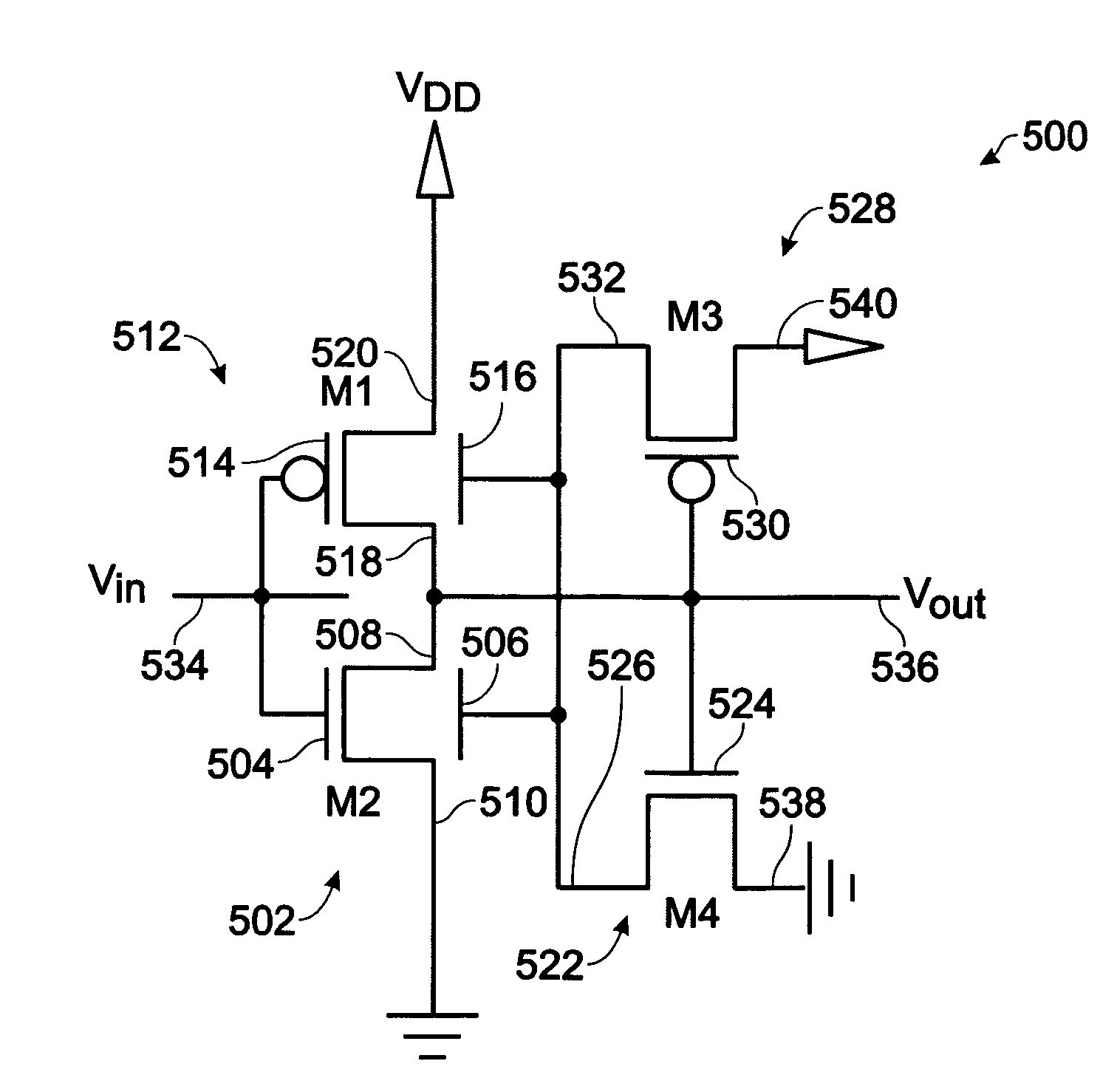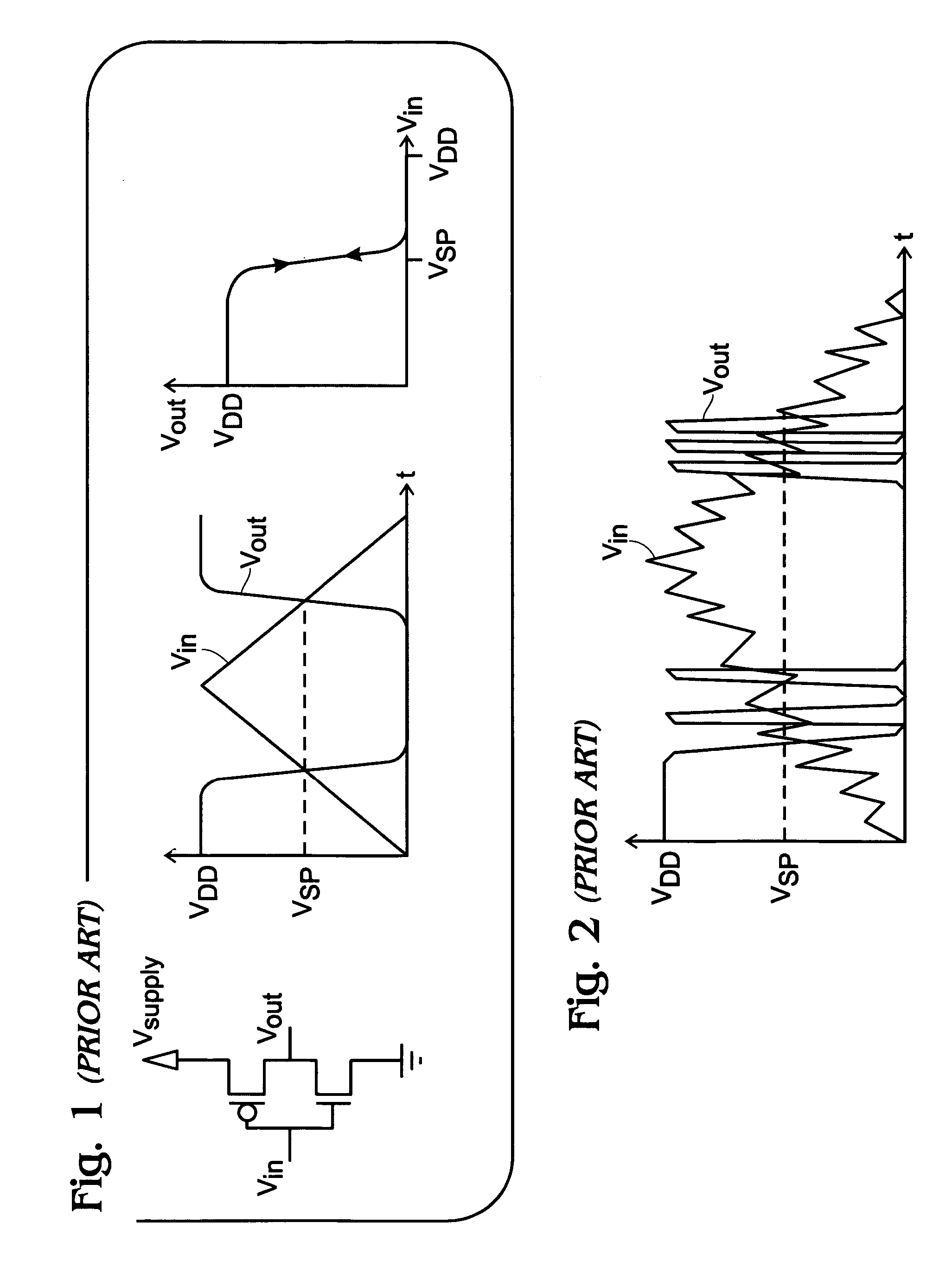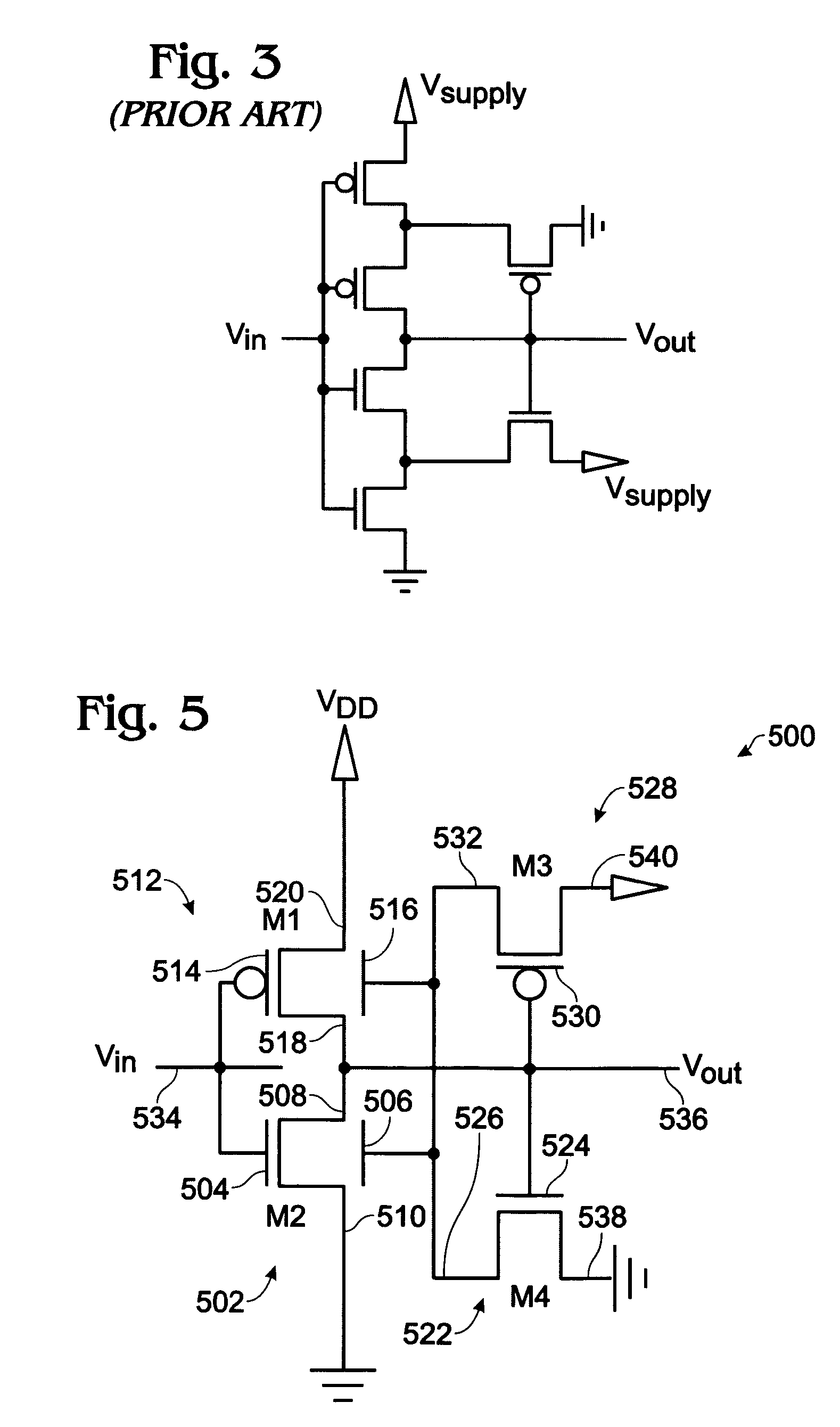Four-transistor Schmitt trigger inverter
- Summary
- Abstract
- Description
- Claims
- Application Information
AI Technical Summary
Benefits of technology
Problems solved by technology
Method used
Image
Examples
Embodiment Construction
[0031]FIG. 5 is a schematic diagram of a four-transistor Schmitt trigger inverter. The Schmitt trigger inverter 500 comprises a NMOS dual-gate thin-film transistor (DG-TFT) 502 (M2) having a top gate 504, a back gate 506, and source / drain regions 508 and 510. A PMOS DG-TFT 512 (M1) has a top gate 514, a back gate 516, and S / D regions 518 and 520. A NMOS TFT 522 (M4) has a gate 524 connected to an NMOS DG-TFT first S / D region 508 and a PMOS DG-TFT first S / D region 518. The NMOS TFT 522 has a first S / D region 526 connected to the NMOS DG-TFT back gate 506 and the PMOS DG-TFT back gate 516. A PMOS TFT 528 (M3) has a gate 530 connected to the NMOS TFT gate 524, and a first S / D region 532 connected to the NMOS TFT first S / D region 526.
[0032] The NMOS DG-TFT top gate 504 is connected to the input signal (Vin) on line 534 and the first S / D region 508 supplies an output signal (Vout) on line 536. The PMOS DG-TFT top gate 514 is also connected to the input signal on line 534. The NMOS DG-TF...
PUM
 Login to View More
Login to View More Abstract
Description
Claims
Application Information
 Login to View More
Login to View More - R&D
- Intellectual Property
- Life Sciences
- Materials
- Tech Scout
- Unparalleled Data Quality
- Higher Quality Content
- 60% Fewer Hallucinations
Browse by: Latest US Patents, China's latest patents, Technical Efficacy Thesaurus, Application Domain, Technology Topic, Popular Technical Reports.
© 2025 PatSnap. All rights reserved.Legal|Privacy policy|Modern Slavery Act Transparency Statement|Sitemap|About US| Contact US: help@patsnap.com



